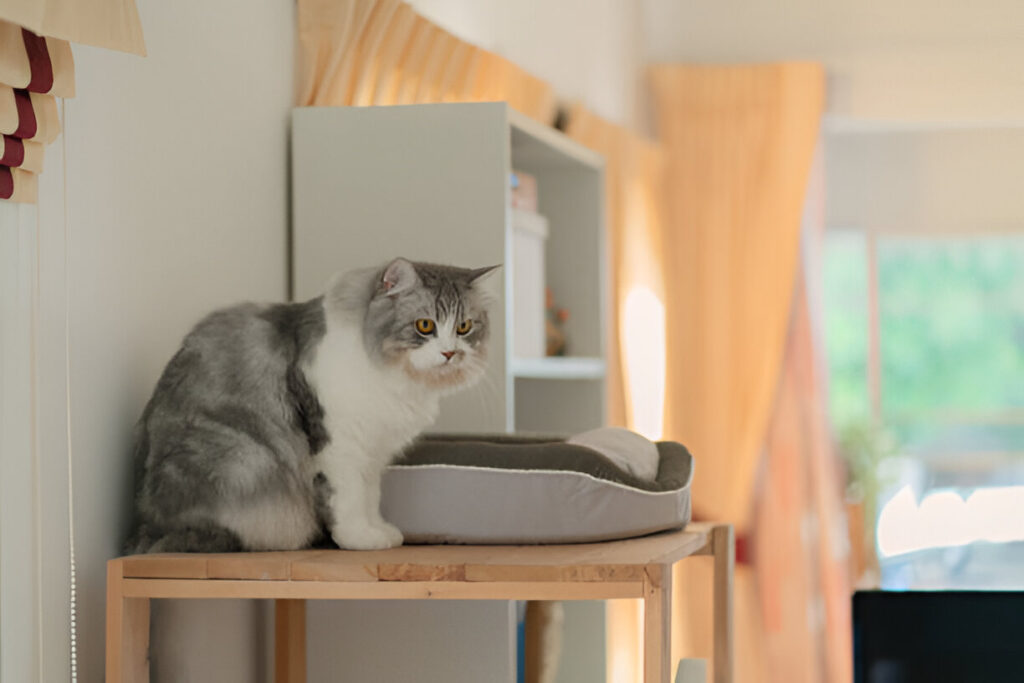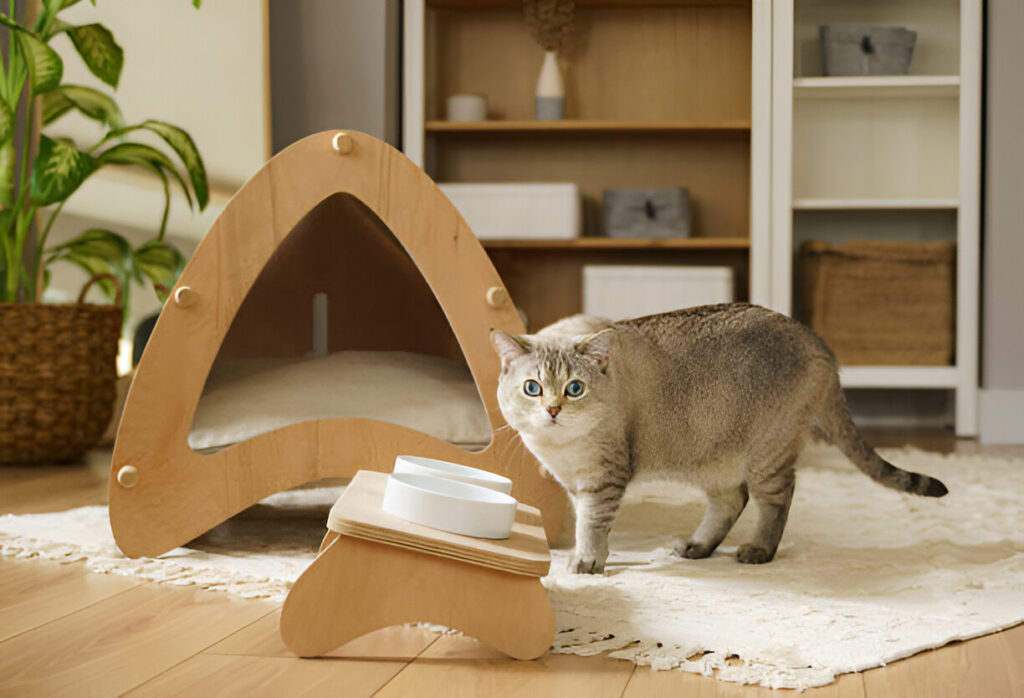How Long Can You Leave a Cat Alone?
Cats are known for their independence, but as pet owners, it’s essential to understand the limits of that autonomy. Leaving a cat alone for extended periods can affect their health, happiness, and behavior. This guide explores the factors to consider, the ideal duration for leaving a cat home alone, and how to ensure your feline friend remains safe and content in your absence.
Understanding Your Cat’s Needs When Left Alone
Cats have unique needs that must be addressed when they’re left alone. While they’re often seen as self-reliant animals, they still require attention to their physical and emotional well-being. Factors like food, water, litter box cleanliness, and mental stimulation play crucial roles. Without proper care, prolonged solitude can lead to stress, boredom, or even health issues.
Factors Affecting How Long You Can Leave Your Cat Alone

Image by Mélissa Dupont
1. Age of Your Cat
- Kittens (0-6 months): Kittens are extremely dependent on the caretaker. They need to be fed frequently, every 4-6 hours, and also need time for play and spending time with them. They are still learning social behaviors and can easily develop anxiety if left alone for long periods. They should not be left alone for more than 4-6 hours because they may get into trouble or feel scared in an unfamiliar environment.
- Adult Cats (1-7 years): Healthy adult cats are independent and can be alone for a pretty long period of time. They do well being left to themselves for 8-12 hours, provided there is food, water, and a clean litter box. It is important that they have something to entertain them, such as scratching posts, toys, and even interactive puzzle feeders to prevent boredom. Of course, this may change depending on the personality and health of the cat.
- Senior Cats (7+ years): Arthritis or limited mobility can be the possible problems with older felines, possibly even cognitive dysfunction. It might be necessary, if not called for more often, to have senior cats checked more frequently-most likely more than once in a single day. Health issues also make them much more sensitive to stress or anxiety, and sometimes they cannot withstand being left behind for long. Ideally, they should not be left alone for more than 6-8 hours without check-ins, as they may struggle to get to their food or litter box or need medication.
2. Health Conditions in Cats
- Chronic Diseases: Cats with health conditions like diabetes, kidney disease, or hyperthyroidism need frequent medication or dietary care. These cats should not be left alone without checking for more than 6-8 hours. Missing certain medications can result in severe outcomes.
- Behavioral or Mobility Issues: Cats with diseases such as arthritis, where their mobility is problematic, find it difficult to reach their food and water or the litter box. They might get confused or anxious when left along for too long. Senior cats with cognitive dysfunction can become confused or agitated when left alone too long.
- Special Needs Cats: Some cats have specific needs-for instance, a need for grooming assistance, mobility support, or even anxiety medication. These cats require more supervision and may not be able to tolerate as much time alone.
3. Your Cat’s Personality
Independent Cats: Some cats are innately independent and do not mind being alone for extended periods. These cats may enjoy their own space and have an ability to entertain themselves. However, they should still have plenty of resources to make them feel comfortable (such as fresh water, food, and a safe space to retreat to).
- Social Cats: Some felines are incredibly social; they might consequently develop separation anxiety when left on their own. In such cases, these cats turn destructive, incessantly vocalize, or even attain behavioral issues in avoiding a litter box and over-grooming themselves. Social cats will require more care for and consideration of your time away must be factored into their sensitive emotional needs.
- Fearful or Anxious Cats: Some cats are by nature more anxious. If these cats are left alone for long periods, they may exhibit negative behaviors such as scratching furniture, urinating outside the litter box, or hiding. For anxious cats, providing a calm environment- perhaps with pheromone diffusers- and limiting isolation time is key.
4. Environmental Factors for Cats
Food & Water Availability: Leave your cat with fresh water and food, and consider getting an automated feeder that will be able to provide them with meals at the right time. For kittens or special-diets cats, you will need to have someone check in on them and feed them at specific times. If your cat is prone to spilling water or knocking over food, secure the setup accordingly.
Litter Boxes: Your cat requires an accessible and clean litter box for comfort. You need to have one litter box per cat, and for multiple-cat households, one extra would be even better. A dirty or inaccessible litter box may cause stress or lead to inappropriate elimination.
- Environmental Safety: Cats are naturally curious animals, and if left to their own devices, they can often find a way to get into trouble. Make sure your home is cat-proofed and that hazards such as electrical cords, small objects, or toxic plants are out of reach. If your cat likes to jump or climb, be aware of any areas in which they could get stuck or hurt.
- Temperature and Comfort: Let your cat have a comfortable place to rest and keep the temperature right for them. Cats generally like to rest in warm, cozy places, but in hot weather, make sure they have a cool place to retreat to. Access to windows or perches for entertainment can help alleviate boredom.
5. External Help and Alternatives

- Pet Sitters or Friends: If you know you will be away longer than 12 hours, it is best to get a pet sitter for your cat. The sitter can feed and water, clean the litter box, and even keep your cat company. This is really necessary for cats who need medication or emotional support.
- Automated Devices: Technology can be a great aid in ensuring your cat’s comfort when you’re away. Automated feeders, water dispensers, and even interactive toys can provide stimulation and alleviate boredom.
- Cameras: Some pet owners use cameras in order to see their cats while they are away. This helps ensure that everything is okay, and some cameras even have the ability to talk back to your cat and provide them with a sense of comfort.
6. General Tips for Leaving Your Cat Alone
- Establish a Routine: Cats are creatures of habit. If you need to leave your cat alone, try establishing a regular feeding and playtime schedule to minimize anxiety.
- Interactive Toys: Provide stimulating toys or puzzle feeders that challenge your cat mentally and physically. This can help distract them and prevent boredom.
- Comfort Items: Leave something with your scent, like an old t-shirt or blanket, that he can lean on for comfort should he feel anxious due to your separation.
The Ideal Duration for Leaving Cats Home Alone
Even though cats are a lot more independent than dogs, they do require attention and stimulation, and above all, care. How long you can safely leave your cat depends on things like age, health, personality, and environment. Once you understand these factors, you will go a long way in ensuring your cat is safe and comfortable when you are away.
How Long is Too Long to Leave a Cat Along?
While cats can handle short periods of time alone, being left alone for long stretches of time is detrimental to their physical and mental health. In general, it is not advised to leave a cat alone for more than 24 hours. Here are some reasons why:
Dehydration: Without access to fresh water for several hours, your cat can quickly become dehydrated. No water within even a few hours, especially with an older or ill cat, may result in problems.
- Missed Meals: If your cat is used to being fed at specific times of the day, then missing meals can result in low blood sugar, especially in kittens, older cats, or cats with chronic conditions such as diabetes. Poor nutrition can cause stress or anxiety.
- Loneliness: Cats are often more independent, but they still need mental stimulation and companionship. Extended isolation can lead to feelings of loneliness, anxiety, and stress, which may manifest as destructive behaviors or a lack of appetite.
- Health Emergencies: Due to a medical condition or injury, your cat might not be able to access important supplies such as food, water, and litter box. Even minor issues can become severe if no one checks up on them.
Safe Length of Time to Leave Cats in the House Along
- Short Trips (4-8 hours)
- For short durations, most cats can manage comfortably alone if their basic needs are met. You’ll want to make sure they have:
- Fresh Water: Ensure they have access to clean water that they can drink throughout the day. Automated water dispensers or bowls that are spill-resistant are helpful.
- Food: If your cat is used to specific mealtimes, make sure they have enough food for the period you’ll be gone. Automatic feeders are excellent for ensuring your cat has access to meals at the appropriate times.
- Litter Box: Ensure the litter box is clean before leaving. A dirty box may lead to inappropriate elimination or stress.
- Mental Stimulation: Leave a few toys or some interesting things to do, such as scratching posts or puzzle feeders, to distract them when you are away.
- Day Trips (8-12 hours)
- Cats can tolerate a day trip out, but you should consider their comfort:
- Automatic Feeders and Water Fountains: On trips that will be more than 8 hours, use an automatic feeder for meals and a water fountain so they have a steady supply of food and hydration.
- Comfort and Entertainment: Plan on extra enrichment if your cat is to be left for an entire workday. Examples of added enrichment would include interactive toys, a cozy place to rest, and/or a view window perch for bird-watching or other outdoor events.
- Safety Check: Leave your cat in a safe place, where she does not have access to dangerous or hazardous items. Cats are curious animals, and they love investigating anything around them, so you should make sure all hazardous materials, electrical cords, or breakable items are out of reach.
- Overnight (12-24 hours) Leaving your cat alone overnight, up to 24 hours, is generally safe for healthy adult cats, but you need to plan accordingly:
- Automated Systems: Automated feeders, water fountains, and litter boxes are a must for overnight absences. These can ensure that your cat has everything they need, but you should set them up before you leave to avoid any malfunction.
- Comfort and Familiarity: Leave familiar items like a blanket or your clothes with your scent to make your cat feel more secure. Some cats may feel more anxious overnight, so adding an extra comfort item can help them relax.
- Hire Cat-Sitters: If you are going to be away a whole 24 hours or more, it’s a good idea for someone to stop in and check on your cat to make sure they are okay and give them some much-needed companionship. This is even more crucial if your cat has separation anxiety or health issues.
Daily Routine and Your Cat
One of the best things you can do to minimize the stress and anxiety for your cat-when you go out and leave them behind-is to have a routine daily schedule. Cats enjoy routine and have a better feeling of security by knowing what may happen next. Here’s how you can involve routine in your cat’s life:
- Feeding Times: Keep to a regular schedule, whether twice a day or more often. If using an automated feeder, make sure it has been programmed to feed at specific times, just as one would normally feed their cat. Predictable feeding will help minimize anxiety and build security in your cat.
- Playtime: This involves spending some playful moments with your feline before leaving, particularly when they belong to high-energy breeds or are kittens. These feather wands or even laser pointers will be helping in wearing your pet out or satisfying the animal. In cases, you would get the opportunity of leaving behind a food puzzle toys and self-entertaining toys which the cat could take up throughout the time you were gone for.
- Cuddles and Attention: Cats are partial to human interaction, although a bit more independent than dogs. Devote time each day to cuddles, petting, or just sitting with your cat. If you will be away for more than a few hours, your cat will appreciate the extra bonding time when you’re home.
- Consistency: If at all possible, keep the same times for feeding, play, and even grooming. A cat accustomed to a schedule will know when you leave and when you return. Any disruption in their routine can lead to confusion, stress, or behaviors you do not want them to acquire.
Additional Tips for Extended Absences
Pet Cams: It is a way pet owners can invest in cameras that remotely allow them to monitor their cat. This offers you peace of mind, as some cameras actually include speakers or the ability to shoot out treats and allow you to interact with your cat.
- Pet Sitters or Neighbors: If you are going to be away a bit longer, consider having a trusted friend, neighbor, or professional pet sitter visit at least once during your time away. They can check on your cat’s needs and give them some attention, besides bringing peace of mind.
- Leave Multiple Resources: If you will be gone for an extended period, consider leaving food and water in various parts of the house. That way, your cat will always have a clear route to sustenance should access to one of them be blocked or fouled.
Tips to Ensure Your Cat Stays Happy and Healthy While You’re Away

- Provide interactive toys, scratching posts, and puzzle feeders to keep your cat’s mind occupied. Consider rotating toys to maintain novelty.
- Pet Feeders
- Invest in automated feeders that can serve your cat on time. Water fountains will also serve clean, fresh water constantly.
- Cat Interactive Toys
- Cat Amusement When Away
- The motion-activated or those that throw out treats should help your pet overcome boredom. Some of them mimic the movement of prey, developing the hunting instinct of your cat.
- Pet Monitors and Cameras
- Smart pet cameras enable viewing of your cat from a distance. Some also allow you to interact with your pet by talking or giving them treats for a reassuring presence when away.
Caring for Cats with Special Needs or Health Concerns When Left Alone
- Care of Ailing Cats While Away
- If your cats have ailments, make advanced plans for medication and observation by a trusted pet sitter or neighbor.
- Needs of Senior Cats When Left Alone
- As cats age, changes may be necessary, including softer bedding, easier litter box access, and more frequent feeding. Changes in lifestyle can help to keep them comfortable.
- Medication Schedules for Home Pets
- If your cat is on a strict medication schedule, a reliable caregiver or timed medication dispenser is a must to keep them healthy.
The Role of Pet Sitters and Boarding Facilities in Your Absence

- Finding a Reliable Pet Sitter
- Pet sitters can accord your cat personalized care and maintain her routine. Look for sitters with great experience in pet sitting and very positive reviews.
- Benefits of the Pet Boarding Services
- Boarding facilities offer professional care within a safe environment. Seek out a facility with good hygiene practices and individual accommodations for cats.
- Temporary Care Options for Cats While Traveling
- If you’re away for an extended period, combining a pet sitter with occasional boarding can offer flexibility and comprehensive care.
Conclusion: Balancing Independence with Responsibility as a Pet Owner
Though cats are independent animals, they still depend on the care and companionship of their owners. Understanding your cat’s specific needs and taking steps proactively will ensure that they are happy and healthy during your time away. Whether it be hiring a sitter, purchasing interactive toys, or continuing with a regular routine, all efforts combine to promote your cat’s well-being. A balance between the independent nature of your cat and the responsibilities involved in being a pet owner will keep your feline companion purring for many years.
Yuns Legdm is a passionate advocate for pet care and the founder of this website, dedicated to providing valuable information for fellow pet lovers and veterinary professionals worldwide. With a deep love for animals, Yuns created this platform to connect passionate pet owners with expert insights from veterinarians around the globe.
This website grows with you—the passionate pet owners and veterinary experts—creating a trusted space where knowledge, experience, and love for animals come together. Whether you’re seeking advice on pet health, nutrition, or general well-being, this platform is here to support you on your journey of responsible and loving pet care.


